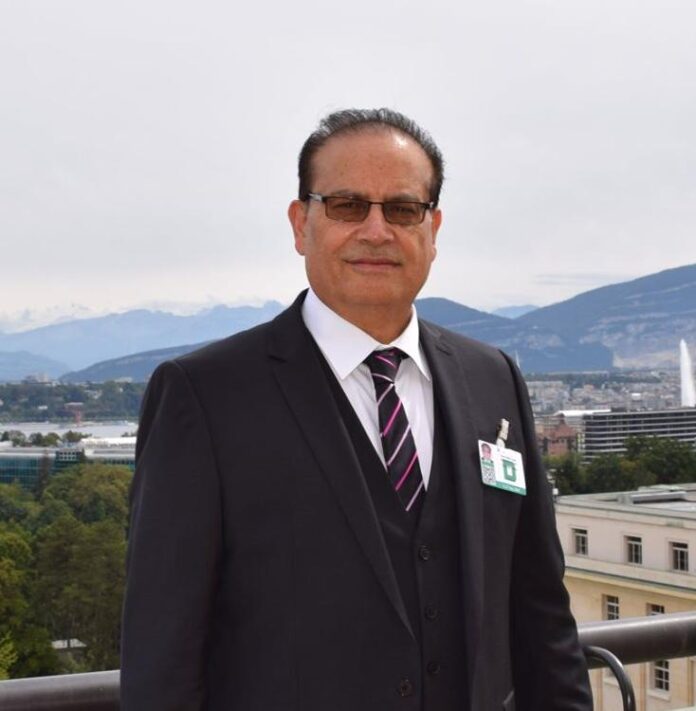By Qamar Bashir
For decades, the South Asian Association for Regional Cooperation (SAARC) was envisioned as a platform for unity, prosperity, and regional integration among the diverse and populous nations of South Asia. With over two billion people and a wealth of natural and human resources, the SAARC region held tremendous promise. Yet despite this potential, SAARC has remained paralyzed—reduced to ceremonial meetings, unfulfilled resolutions, and a legacy of frustration. The principal reason for its failure has been the hegemonic posture and political intransigence of India, which consistently prioritized its own bilateral disputes over collective regional interests. Whenever India had tensions with Pakistan, Nepal, Bangladesh, or Sri Lanka, it weaponized its influence within SAARC to paralyze the forum, suffocating any genuine attempt at regional cooperation.
Now, a new door has opened, and through it lies the opportunity for a historic transformation. Pakistan and China are reportedly working toward creating a new regional bloc that excludes India—the very actor that has repeatedly blocked progress—and instead includes willing and cooperative regional players.
The envisioned alliance includes Pakistan, China, Afghanistan, Bangladesh, Nepal, Sri Lanka, Bhutan, Maldives, Nepal, and potentially Iran. By replacing India with China, this restructured bloc is poised to deliver what SAARC never could: unity, stability, and development rooted in mutual respect and economic advancement. It is a masterstroke in regional diplomacy, one that offers South Asia a second chance at integration—this time with an engine powerful enough to carry the weight of transformation.
China’s inclusion brings with it unmatched potential for infrastructure development, trade expansion, digital connectivity, and strategic outreach. Having already committed over $62 billion to the China-Pakistan Economic Corridor (CPEC), and more than $1 trillion across its global Belt and Road Initiative (BRI), China’s proven commitment to long-term infrastructure and investment is unparalleled. If this new bloc materializes, it could witness infrastructure investments exceeding $250 to $300 billion by 2035. These would span across rail and road networks connecting Gwadar to Kabul, Chabahar to Dhaka, and Kathmandu to Colombo. High-speed rail corridors, smart ports, integrated energy grids, and region-wide highway systems could form the physical backbone of this new South Asian alliance.
Trade, long crippled under SAARC due to political interference, has a chance to flourish. Intra-SAARC trade has languished at a pitiful 5% of total regional trade, while ASEAN boasts over 25% and the EU surpasses 60%. With India out and China in, intra-regional trade in South Asia could rise to 20% by 2030, translating into over $250 billion in trade volume, compared to $67 billion today. China’s economic ties with Bangladesh, Sri Lanka, and Nepal are already strong, and its access to Pakistan’s warm-water ports offers landlocked Central Asian and South Asian countries a direct outlet to global markets. The potential for growth in textiles, agri-processing, electronics, construction materials, and green technologies is immense, laying the foundation for self-sustaining regional value chains.
Foreign direct investment is also expected to surge. China, the world’s second-largest source of outbound FDI, invested over $136 billion globally in 2023. In the current SAARC bloc, most Chinese FDI is confined to Pakistan. But a restructured bloc with China at the center could see FDI flows jump from the current $10 billion to over $100 billion by 2035. These funds would likely target special economic zones, digital infrastructure, energy projects, manufacturing clusters, and agricultural modernization—unlocking employment and industrialization at a scale the region has never witnessed before.
The digital revolution would also accelerate. China’s Digital Silk Road offers undersea cables, fiber optics, cloud computing, AI platforms, and next-gen telecom. Expansion of this model to the region could deliver high-speed internet to over 400 million currently underserved users, transforming education, healthcare, banking, and governance. Regional cloud computing systems, digital currency interoperability, and fintech solutions would enable real-time trade, financial inclusion, and cyber-resilience. China’s BeiDou satellite navigation system could replace the region’s dependence on U.S. GPS, empowering the bloc with sovereign control over aviation, logistics, and defense mapping—an essential step in building technological independence.
Strategically, the inclusion of Afghanistan is a geopolitical pivot. Afghanistan connects the bloc to Central Asia and, through China and Pakistan, to Iran and the Middle East. With Iran’s Chabahar Port and Pakistan’s Gwadar Port acting as twin maritime gateways, and with China constructing transit and trade corridors through the region, this alliance becomes a global artery of commerce. Central Asian energy and minerals could flow southward to the Arabian Sea, while South Asian goods find shorter, cheaper routes to Europe and Africa. Transportation costs across the region could fall by 30–50%, according to the Asian Development Bank, directly improving the competitiveness of exports and reducing the price of imports.
The human impact is equally transformative. With China’s support, the region could lift over 300 million people out of poverty by 2040 through job creation, industrial expansion, and rural upliftment. Unemployment across Pakistan, Bangladesh, and Afghanistan could decline by 15 to 20%, and access to clean water, electricity, healthcare, and digital literacy would expand exponentially. China’s model of non-interference—unlike Western or Indian models—ensures that sovereignty remains intact. Beijing does not fund regime change, nor does it meddle in domestic politics. It delivers roads, power plants, ports, and platforms—not political ultimatums. It respects its partners and uplifts their capacity.
India’s exclusion is not an act of retaliation but of necessity. Its leadership has repeatedly failed to grasp the essence of regional cooperation. New Delhi’s rigid nationalism, refusal to separate bilateral issues from multilateral platforms, and its track record of stalling progress made SAARC unworkable. Its foreign policy has alienated neighbors and irritated allies. Even its Western backers are increasingly wary of India’s refusal to align on key global issues, such as sanctions on Russia or trade cooperation. India sees itself as a regional giant, but in practice it has been a disruptive force in South Asian diplomacy.
This realignment offers South Asia a future where roads replace borders, where fiber optics replace fences, and where mutual progress replaces mutual suspicion. It envisions a regional community where ports connect producers to consumers, where satellites link students to teachers, and where dignity replaces desperation. The potential is no longer theoretical. It is tangible, measurable, and achievable—if the political will aligns with regional ambition.
South Asia has waited long enough. While other regions moved forward, we remained frozen in a structure designed to fail. But with China’s entry and India’s exclusion, we now have the opportunity to design a platform that works—for people, for peace, and for prosperity. It is not merely about replacing a nation with another. It is about replacing a mindset of dominance with one of partnership. It is about building a future that no longer depends on the whims of one capital but is driven by the shared dreams of a billion people.
If the vision is pursued with clarity and courage, this new South Asian bloc—backed by China’s resources and guided by mutual interest—will not only transform the region. It will set a global example of how fractured regions can reinvent themselves, not through confrontation, but through cooperation.
By Qamar Bashir
Press Secretary to the President (Rtd)
Former Press Minister, Embassy of Pakistan to France
Former MD, SRBC | Macomb, Michigan, USA

















